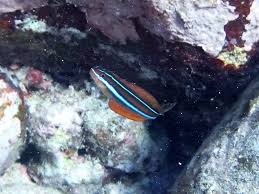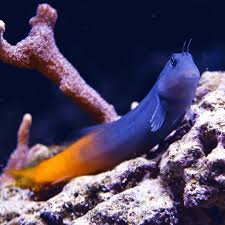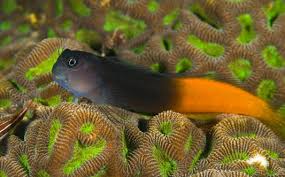Legends of the Dragon in China’s Imperial Dynasties

The dragon is one of the most enduring symbols in Chinese culture, deeply woven into the fabric of the nation’s history, myths, and legends. It is a creature of immense power, revered as a symbol of imperial authority, auspiciousness, and divine protection. Throughout China’s long and storied history, from the Qin Dynasty to the Qing Dynasty, the dragon has been a central figure in the myths, legends, and beliefs that shaped the identity of each era. This article delves into the role of the dragon in Chinese folklore during the imperial dynasties, exploring the various legends and stories that were passed down through generations, each one adding layers of meaning to this mythical creature’s significance.
1. The Dragon and the Founding of the Chinese Empire
The legend of the dragon is tied closely to the earliest foundations of Chinese civilization. According to one of the most well-known myths, the first emperor of China, Emperor Huangdi (the Yellow Emperor), was associated with the dragon. Emperor Huangdi is considered the ancestor of all Chinese people, and his reign is said to have ushered in a period of great unity and prosperity.
In one particular version of the myth, the Yellow Emperor is said to have been born under the sign of the dragon and was, therefore, a divine being with extraordinary powers. This divine connection to the dragon helped to solidify the emperor’s legitimacy and divine right to rule. The dragon, therefore, became a powerful symbol of the emperor’s authority and the nation’s strength, representing an unbroken link between the ruling dynasty and the divine forces of nature.
The Five Emperors of ancient China, considered the foundational leaders of the Chinese civilization, are also often depicted with dragon imagery. In this context, the dragon is not only a symbol of imperial power but also of the unity and stability of the empire. The dragon’s role in the early legends of China is inseparable from the concept of imperial sovereignty, where the ruler is seen as the earthly representative of celestial forces.
2. The Dragon and the Qin Dynasty: Power and Control
The Qin Dynasty (221-206 BCE) is one of the earliest and most significant periods in Chinese history. Under the rule of Emperor Qin Shi Huang, China was unified for the first time, and many of the symbols that represent imperial China were codified. During this time, the dragon became firmly associated with the emperor and the imperial throne.
One of the most famous dragon-related stories of the Qin Dynasty involves the emperor’s quest for immortality. Qin Shi Huang was obsessed with finding ways to live forever, and he sent his armies to search for the elixir of life. It is said that in his efforts to secure eternal life, he sought the guidance of alchemists and scholars, who believed that dragons were connected to the forces of nature that could grant immortality.
The dragon was also featured on the imperial seals, the dragon throne, and in imperial rituals. The dragon’s image symbolized not only the emperor’s power but also the unity of the Chinese people under a single ruler. The connection between the emperor and the dragon was solidified during the Qin Dynasty, setting the stage for future dynasties.
3. The Dragon and the Han Dynasty: A Symbol of Prosperity and Wisdom
The Han Dynasty (206 BCE–220 CE) is often regarded as a golden age of Chinese civilization, marked by advances in science, culture, and governance. During this period, the dragon continued to be a symbol of the emperor’s divine right to rule, but its meaning expanded to represent wisdom, longevity, and prosperity.
One of the most significant dragon-related legends of the Han Dynasty involves the Empress Dowager Lü, who is said to have dreamed of a dragon while she was pregnant with the future emperor, Emperor Liu Hong. In the dream, the dragon circled her, symbolizing the child’s future greatness and divine favor. This dream was interpreted as a sign that the child would be a ruler of extraordinary wisdom and power, and indeed, Emperor Liu Hong went on to become one of the most respected emperors in Chinese history.
During the Han Dynasty, the dragon was also associated with imperial wisdom and knowledge. Scholars of the time often used dragon imagery in their writings and artworks to convey the idea of imperial virtue and enlightened rule. The dragon, in this context, became a metaphor for the ideal ruler, one who was wise, just, and capable of maintaining harmony between heaven and earth.
4. The Dragon and the Tang Dynasty: Glory and Divine Protection
The Tang Dynasty (618–907 CE) is often seen as one of the most prosperous and culturally rich periods in Chinese history. The reign of Emperor Taizong is particularly notable for its contributions to Chinese culture and the arts. The dragon, as a symbol of imperial power, continued to play an important role in both royal and public life during this time.
One of the most famous dragon-related legends from the Tang Dynasty is the story of Emperor Xuanzong, who reigned during the height of the dynasty’s power. According to the myth, Emperor Xuanzong was visited by a dragon during a time of national crisis. The dragon appeared in his dream, offering guidance and wisdom on how to restore peace and prosperity to the empire. The dragon’s intervention was seen as a sign that divine protection was granted to the emperor, reinforcing the idea that the emperor’s authority came not only from the people but from celestial forces.
During the Tang Dynasty, dragons were also commonly used in imperial court ceremonies, paintings, and sculptures. The dragon was associated with both imperial authority and divine protection, reinforcing the idea that the emperor was chosen by the heavens to lead the people. The myth of the dragon’s role in protecting the emperor and his empire became a central theme in Tang literature and art, influencing future generations of Chinese artists and storytellers.
5. The Dragon and the Song Dynasty: Spiritual Power and Blessings
The Song Dynasty (960–1279 CE) was a period of great cultural and intellectual flourishing in China. It was during this time that the dragon’s association with spiritual power and protection grew even stronger, and the creature became a symbol of the emperor’s ability to bring blessings and stability to the nation.
One of the most famous legends of the Song Dynasty is the story of Emperor Huizong, who is said to have summoned a dragon to protect the country from invasion. The legend goes that when the Song Dynasty was under threat from foreign invaders, Emperor Huizong prayed to the dragon, seeking its protection. In response, a dragon appeared and granted the emperor divine aid, ensuring that the Song Dynasty would survive the turmoil.
In addition to this legend, the Song Dynasty is known for the development of imperial dragon imagery, particularly in ceramics and porcelain. Dragons were often depicted in intricate designs on Song-era pottery, where they were believed to bring good fortune and prosperity to those who owned them. These works of art have remained an important part of China’s cultural heritage and are still highly prized by collectors and museums around the world.
6. The Dragon and the Ming Dynasty: Imperial Majesty and Eternal Rule
The Ming Dynasty (1368–1644 CE) saw the height of dragon symbolism in imperial China. The Ming emperors, particularly Emperor Yongle, were known for their extravagant displays of power and wealth. The dragon became synonymous with imperial authority, and it was used extensively in the design of royal robes, thrones, and even in architectural features of the Forbidden City.
A well-known legend from the Ming Dynasty is the tale of Emperor Jiajing, who was said to have been blessed by the dragon after undergoing a series of trials. The emperor had suffered several years of illness, but upon invoking the dragon’s blessing, he was miraculously healed. This story further reinforced the belief that the dragon was a divine protector and a symbol of the emperor’s celestial connection to heaven.
The Ming emperors also used the dragon to project their imperial power and divine legitimacy. The dragon robe, adorned with five claws (a symbol of the emperor’s supreme authority), became one of the most iconic symbols of imperial China. The dragon was not only a symbol of the emperor’s rule but also a representation of the connection between the imperial family and the divine forces that governed the world.
7. The Dragon and the Qing Dynasty: A Symbol of Power and Decline
The Qing Dynasty (1644–1912 CE), the last imperial dynasty in Chinese history, continued to use the dragon as a symbol of imperial power, but the creature’s role also reflected the dynasty’s eventual decline. The Qing emperors were known for their lavish use of dragon imagery, especially in the construction of the Imperial Palace and court regalia.
However, as the Qing Dynasty faced increasing internal strife, foreign invasions, and political instability, the dragon became a symbol of both imperial might and the struggles of the ruling family. The Taiping Rebellion and the Boxer Rebellion, two of the most significant uprisings against the Qing Dynasty, both featured dragon imagery as a sign of the people’s desire for change and renewal. In these rebellions, the dragon symbolized not only imperial power but also the potential for transformation and revolution.
Despite the challenges faced by the Qing Dynasty, the dragon continued to be a symbol of strength and resilience, even as the empire ultimately fell in 1912.
8. Conclusion: The Enduring Legacy of the Dragon
Throughout China’s imperial history, the dragon has remained a symbol of power, authority, and divine protection. From the earliest days of the Qin Dynasty to the final years of the Qing Dynasty, the dragon has been central to the stories, legends, and myths that
have shaped China’s national identity. Whether associated with the wisdom and prosperity of the Han Dynasty, the glory of the Tang Dynasty, or the spiritual power of the Song Dynasty, the dragon’s presence has transcended time and remains a beloved symbol in Chinese culture today.
As China continues to evolve, the dragon’s legacy endures. It is a symbol not only of imperial history but also of the enduring connection between the Chinese people and the forces of nature and the divine. The dragon will continue to inspire awe, reverence, and pride in the hearts of the Chinese people for generations to come.








